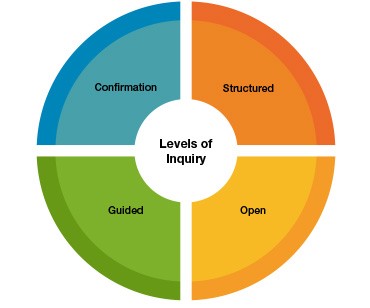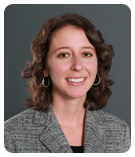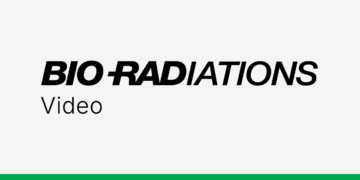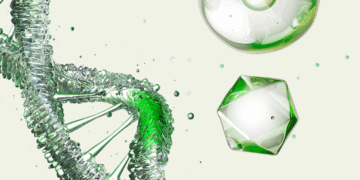In an ever-changing world of science educational standards set by national, state, and local bodies, how does a company that produces laboratory kits for life science education develop its curriculum? How does it know what lessons teachers need to teach?
A curriculum developer needs to bridge several worlds, keeping up with developments in both the life sciences and the learning sciences, as well as changes in educational requirements and pedagogical trends. The curriculum developer needs to ensure that educational products meet these requirements, present a format that inspires curiosity, and help students develop the critical thinking skills they’ll need whether they become scientists or choose other careers.
Meeting Standards
Released in 2013, NGSS was designed to raise U.S. students’ international ranking in science scores, encourage more students to pursue scientific careers, and provide critical thinking skills applicable to all careers (Gillis 2013).
The AP program allows high school students to earn college credit in a number of subjects by demonstrating specific knowledge on a standardized test. The program was created in the 1950s and has been substantially overhauled several times, most recently in 2012 (Katz 2006).
When new standards like these come into play or are revised, education products need to be reassessed to make sure they are still teaching what students will be evaluated on.
The Bio-Rad Explorer™ Program, established in 1996, is at the forefront of developing educational kits that meet the academic standards set by these forces. With its expertise in providing the highest-standard tools for researchers, the company’s objective was to raise the quality of the classroom laboratory experience by providing research-grade tools for classrooms across the nation and globe.
As staff scientist Jeannie Spagnolo puts it, “Kids get to do real science. It’s not a fake experiment. They’re using the exact same reagents scientists are using.”
The Changing Educational Climate
Inquiry-based learning has been an evolving educational concept for close to a century. In the 1920s, psychologist John Dewey challenged the idea of students as empty vessels waiting to be filled with facts. He criticized the view of science as an accumulation of knowledge and proposed instead that science be presented as a way of thinking (National Research Council 2010).
In the 50s, Joseph Schwab, a professor of education and natural history, introduced the concept of different levels of inquiry (Schwab 1966). Schwab was an early proponent of the idea that the best way to learn science is to act like a scientist, but he also recognized that the highest-level cognitive skills are arrived at in stages.
In 1957 the Soviet launch of the satellite Sputnik spooked government leaders in the U.S. enough to prod them into implementing educational reforms that people like Schwab had only been able to talk about. In 1958 Congress passed the National Defense Education Act, channeling money and supplies into classrooms across the country. Among these supplies were hands-on laboratory kits (Abramson 2007).

Four levels of inquiry follow stages of cognitive and educational progression.
Government and public enthusiasm for science education continued through the project to send men to the moon, but as cold war fears dissipated, so did the urgency for scientific competition in the global arena.
In recent years, slipping U.S. scientific achievement scores have revived interest in education reform, and a surge in research into how people learn has afforded inquiry a foothold. As it has become recognized as a distinct skill, methods have been developed to assess students’ ability to master it.
Based on recent research, Schwab’s levels of inquiry have been refined to four categories: confirmation, structured, guided, and open. At the confirmation level, teachers help students follow procedures to confirm known concepts. In structured inquiry, a teacher provides a question and procedure, but students are expected to analyze results. For guided inquiry, the teacher poses a question but offers no procedure, so students must devise their own, and in open inquiry students come up with the entire process — question, investigation, analysis, and communication of findings (National Institutes for Health 2005).
The Bio-Rad Explorer product line includes ThINQ! ™ Kits with inquiry-based lessons encouraging students to ask their own questions and develop protocols, with different versions to accommodate different levels of student readiness. The line also includes how-to kits that help students master common lab procedures such as amplification or gel electrophoresis.
Charting a Course
Effective scientific curricula guide students in learning to learn. According to Bio-Rad Explorer curriculum writer Nicole Shea, “Many people still think of science as a body of facts, but that’s not what science is. Science is the capacity to generate hypotheses, test theories, measure and analyze data, and make informed decisions. It’s the process.”

Curriculum Writer, Bio-Rad Explorer
Hercules, CA
Curriculum writing is also a process, and Shea works in close conjunction with the Bio-Rad Explorer’s research and development team, marketing team, and curriculum training specialists (CTS), who are situated in four geographic regions of the U.S. and work directly with teachers to help them plan and implement their lab lessons.
Teachers also steer kit development. The program’s Educational Advisory Board is a group of teachers who provide guidance, and educator input is also collected through surveys and the stories the team hears in the field. The vital information needed from teachers is what concepts are difficult to present with currently available tools and what student misconceptions are difficult to overcome. The R&D team devises innovative ways to address these problems with the high-quality tools at its disposal. The curriculum writer then develops lessons that help teachers meet the benchmarks required of them while engaging and challenging students at appropriate levels.
The curriculum writer requires up-to-the-second knowledge of evolving educational requirements, expertise in a wide range of scientific disciplines, and an advanced understanding of how people learn.
With an MS in molecular genetics, microbiology, and immunology, and a PhD in learning, cognition, instruction, and development, Shea fuses life science and learning science into in a curriculum that helps schools meet evolving expectations.
“Teachers will do whatever it takes to do the best for their kids and get them engaged in learning about science,” Shea says. “We’re streamlining the process for them with a high-quality product that fits what they need to be teaching.”
But a good curriculum benefits students as much as teachers. A successful science curriculum not only prepares students choosing science careers, it imparts the thinking skills they will all need in a technological world that seems to be changing overnight.
Resources
Visit explorer.bio-rad.com for more information on Bio-Rad Explorer Kits.
Visit http://www.bioradiations.com/education-corner and a for professional resources including curricula, or to share your lesson plans or stories.
Email biotechnology_explorer@bio-rad.com to inquire about working with a curriculum training specialist, or for any other questions.
References
Abramson L (2007). Sputnik left legacy for U.S. science education. National Public Radio, Sept. 30.
Gillis J (2013). New guidelines call for broad changes in science education. New York Times. Apr. 9.
Katz SN (2006). The liberal arts in school and college. Chronicle of Higher Education, Mar. 10.
National Institutes for Health (2005). Doing Science: The Process of Science Inquiry. http://science.education.nih.gov/supplements/nih6/inquiry/guide/info_process-a.html. Accessed Dec. 11, 2015.
National Research Council. 2000. Inquiry and the National Science Education Standards: A Guide for Teaching and Learning. Washington, DC: National Academy Press.
Schwab J (1966). The Teaching of Science. Cambridge, MA: Harvard University Press.



